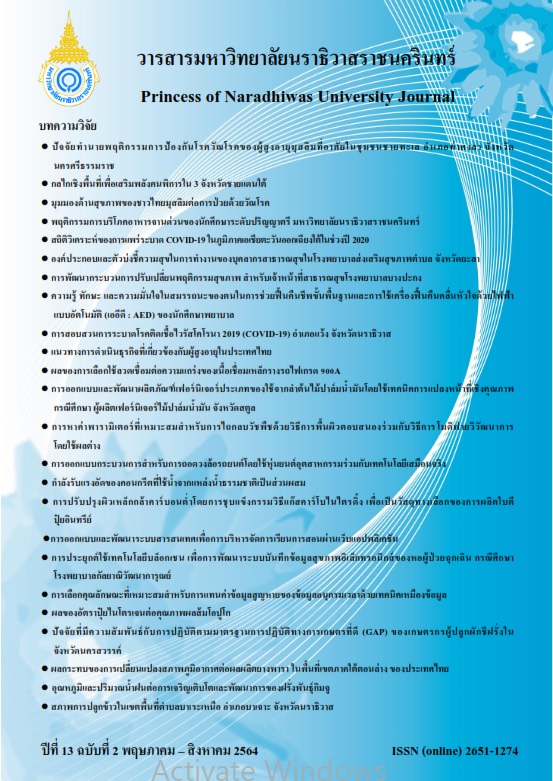Designing the Process for Disassembling Car Wheels using Industrial Robot Collaborated with Virtual Reality Technology
Keywords:
Process design, Disassembly car wheels, Industrial robot, Virtual reality technologyAbstract
This research aims to design the process for disassembling car wheels using industrial robot collaborated with virtual reality technology through robot applications. The modular structured and procedural programming use a high-level robotic language programming. This research proposes methods for robot arm movement and industrial robot positioning in work cell simulation by developing an integrated program. The design in this process involves in removing the screws from the wheel of the car and putting it in the right place. The operation begins with whether the inspection of the block wrench attached to the robot arm correctly, and if using the wrong wrench, the robot program will change the correct wrench before screwing it. The screwing out and placing screws of car wheels in 5 correct positions were tested. The experiment evaluated the accuracy of the robot arm in identifying in a virtual reality environment. The process compared between the stereo virtual environment and the virtual device environment. The equipment used in the experiment consisted of 3D glasses and virtual control devices. From the experiment, it can be seen that the stereo virtual environments were more accurate than virtual device environments. The process design can be used for planning work in industrial automation. A good process design will allow the machine to work systematically with high accuracy which helps saving time and creating a competitive advantage.
References
Adebayo, A.O., Chaubey, M.S., & Numbu, L.P. (2019). Industry 4.0: The Fourth Industrial Revolution and how it Relates to the Application of Internet of Things (IoT). Journal of Multidisciplinary Engineering Science Studies, 5(2), 2477-2482.
Alla G.K., & Kacprzyk, J. (2019). Robotics: Industry 4.0 Issues & New Intelligent Control Paradigms, Studies in Systems, Decision and Control, Volume 272. Spinger.
Bottani, E., & Vignali, G. (2019). Augmented reality technology in the manufacturing Industry. Iise Transactions, 51(3), 284-310.
Burghardt, A., Szybicki, S.P., Gierlak, P., Kurc, K., Pietru, P., & Cygan, R. (2020). Programming of Industrial Robots Using Virtual Reality and Digital Twins. Applied Sciences, 10(486), 1-13.
Ervural, B.C., & Ervural, B. (2018). Overview of Cyber Security in the Industry 4.0 Era, Industry 4.0: Managing. The Digital Transformation, 267-284.
Galin, R., & Meshcheryakov, R. (2019). Automation and robotics in the context of Industry 4.0: the shift to collaborative robots. Materials Science and Engineering, 537, 1-6.
Geihs, K. (2020). Engineering Challenges Ahead for Robot Teamwork in Dynamic Environments. Applied Sciences, 10(1368), 1-18.
Kravets Alla G. (2020). Analysis of Dynamics in Human—Exoskeleton Collaborative, System Robotics: Industry 4.0. Issues & New Intelligent Control Paradigms, 272, 113-124.
Kuts, V., Tahemaa, T., Otto, T., & Bondarenko, Y. (2019). Digital twin based synchronised control and simulation of the industrial robotic cell using virtual reality, Journal of Machine Engineering, 19(1), 128-145.
Lampropoulos, G., Siakas, K., & Anastasiadis, T. (2019). Internet of Thing in the Context of Industry 4.0: an Overview. International Journal of Entrepreneurial Knowledge, 7(1), 4-19.
McMillan, K., Flood, K., & Glaeser, R. (2017). Virtual reality, augmented reality, mixed reality, and the marine conservation movement. John Wiley & Sons, 27(S1), 162–168.
Oztemel, E., & Gursev, S. (2020). Literature review of Industry 4.0 and related technologies. Journal of Intelligent Manufacturing, 31, 127–182.
Perez, L., Rodríguez-Jiménez, S., Rodríguez, N., Usamentiaga R., & Daniel F.G. (2020). Digital Twin and Virtual Reality Based Methodology for Multi-Robot Manufacturing Cell Commissioning. Applied Sciences, 10(3633), 1-18.
Qu, Y.J., Ming, X.G., Liu, Z.W., Zhang, X.Y. & Hou, Z.T. (2019). Smart manufacturing systems: state of the art and future trends, The International Journal of Advanced Manufacturing Technology, 103, 3751–3768.
Radianti, J., Tim A.M., Fromm, J., & Wohlgenannt, I. (2020). A systematic review of immersive virtual reality applications for higher education: Design elements,lessons learned, and research agenda. Computers & Education, 147, 1-29.
Tosello, E., Menegatti, E., & Castaman, N. (2019). Using Robotics to Train Students for Industry 4.0, International Federation of Automatic Control, 52(9), 159–164.
Trochimczuk, R., Lukaszewicz, A., Szczebiot, R., Alexey G.K., & Mircheski, I. (2019). Modeling, Programming and Simulation of Robotized Workcell Created for Industrial and Service Needs. Engineering for Rural Development, 18(455), 1313-1318.
Vassilis C.M., & Nikos A.A. (2016). IT and Mechatronics in Industrial RoboticWorkcell Design and Operation. Research Gate, 440-455.
Vinuesa et al., (2020). The role of artificial intelligence in achieving the Sustainable Development Goals. Nature Communication, 11(233), 1-10.




